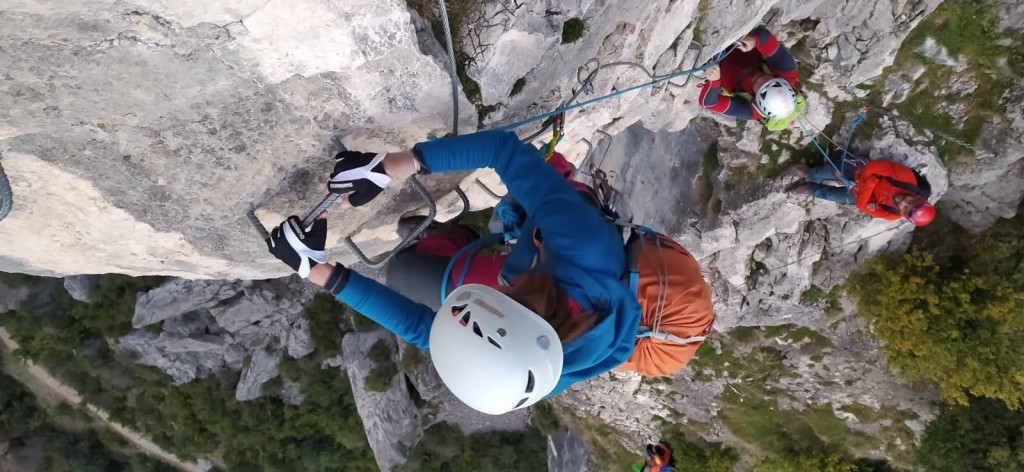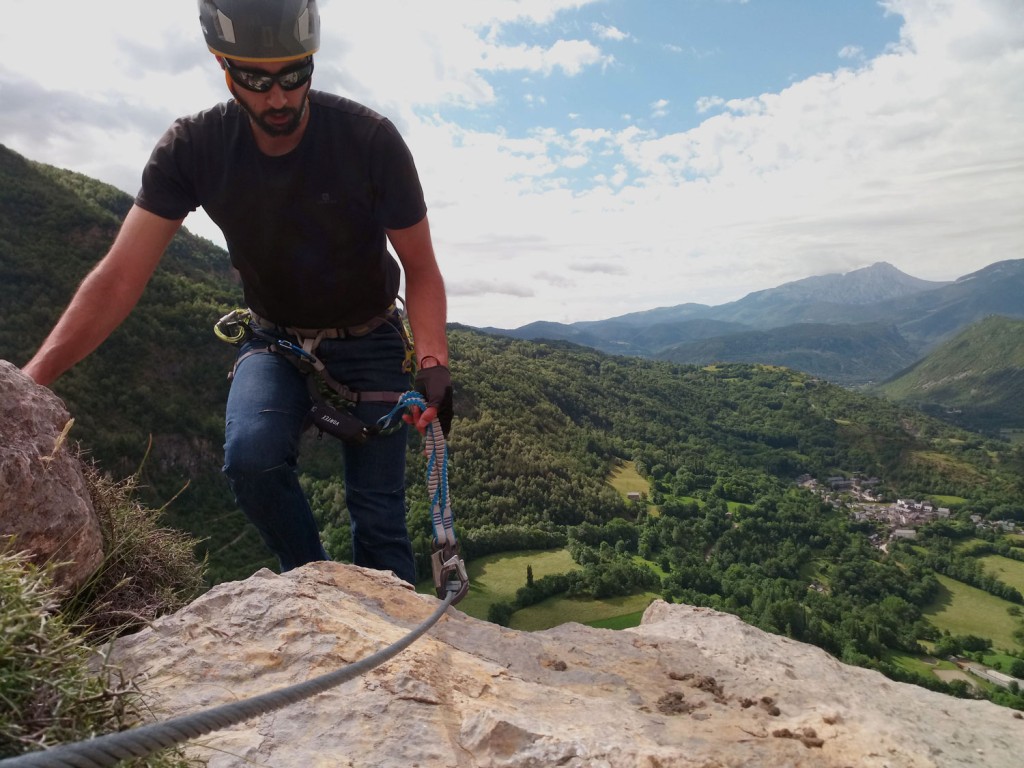Via ferrata is an adventure activity that makes you enjoy heights in a different way. It is a sport that requires an adequate physical condition but no complex techniques. However, it must be practiced correctly.
It consists of both vertical and horizontal itineraries that are equipped with several materials such as nails, brackets, climbing holds, grips, chains, suspension bridges and zip-lines which let hikers arrive safely to inaccessible areas even if they are not used to climbing. However, most of via ferrata is practiced at a considerable altitude; therefore it is not recommended for people suffering from vertigo.
Despite the simplicity of this activity, it is necessary to use specific technical equipment such as helmet, harness, anchor line and sink, and it is advisable to practice it with a professional guide, especially if it is your first contact.
History
According to some historians, the beginning of alpinism took place in 1492 when, following the orders of the king Charles VIII of France, the captain François Antoine de Ville and his assistants arrived to the summit of Mount Aiguille, a summit never reached before.
The first via ferrata was installed in 1843 in Austria to access the Hoher Dachtein peak. Afterwards, two more vias were equipped in the Mount Grobglockner, also in Austria in 1869, and in Marmolada, in the Dolomites-Italy in 1903.
At the end of 19th century, multiple European mountain areas had vias ferrata but it was not until the First World War when the number of them increased exponentially, since soldiers used to use them to arrive to outposts located in remote areas in the Alps. After the war, those vias ferrata became paths for sports and leisure.
Vías ferrata in Benasque Valley
In Benasque Valley there are two vias ferrata that delight enthusiast of this activity.
Vía ferrata Sacs, Benasque
Located at the entrance of Posets-Maladeta Nature Park, this via lets enjoy incredible views.
Although it is famous for the great verticality, it has a progressive start that becomes more entertaining and athletic thanks to the overhangs and the height exposition. Given the length, 550 m, it is advisable to use gloves because the chains and the life anchor manipulation will last for long.

The ferrata of Sacs starts with brackets and becomes more vertical once we gain height and surmount some overhangs. After passing through this beautiful section, we have to move sideways until arriving to a transverse trek followed by a vertical one, where we will come across the greatest overhang of this ferrata almost at the end, when we are about to reach the summit.
Once in the summit, the views of both Maladeta and Aneto peaks are worth all the effort made, bringing nature magnanimity to its most.
Technical features:
Elevation gain: 350mts.
Equipeed length: 770mts.
Ascent length: The expected length for two experienced people is 2 h.
Descent: Por el camino de la "Pleta Ixeya" a la central de Ruda.
Minimum height: 1.211m
Overhangs: 3
Installed equipment: More than 360 stairs, more than 150 resin bolts. Total cable meters: 550 m. Total chain meters: 80 m. Parallel line with 17 resin anchors used for rescues and abseiling. All the anchoring is made of stainless resin.
Builder: Fixe Climbing S.L.
Vía ferrata de Castellaso, Sesué
This ferrata is located in a former quarry, something that has become its hallmark. In addition, the itinerary is well assorted and it is ingeniously equipped making the most of the wall possibilities, something that guarantees the enjoyment. It starts with some easy climbing steps becoming increasingly more difficult due to several overhangs and aerial steps.
The first part is the easiest one, perfect for warming up because it consists of a vertical wall equipped with multiple brackets that leads to a more sloping section where the brackets disappear. From there, we will have to move forward only through natural holds, which means climbing but through easy terrain and belayed by an anchor line.
Once in the vertical area, the brackets appear again. Four short overhangs with numerous brackets follow one another and the ferrata becomes more aerial.
We finally arrive to a grassy terrace that leads to a much easier overhang, reaching Castellaso summit, an exceptional viewpoint of Ésera river and Benasque Valley.

Technical features:
Elevation gain: 237mts.
Equipeed length: 280mts.
Ascent length: La duración prevista por dos personas con experiencia es de 45'.
Overhangs: 4
Builder: Shivling